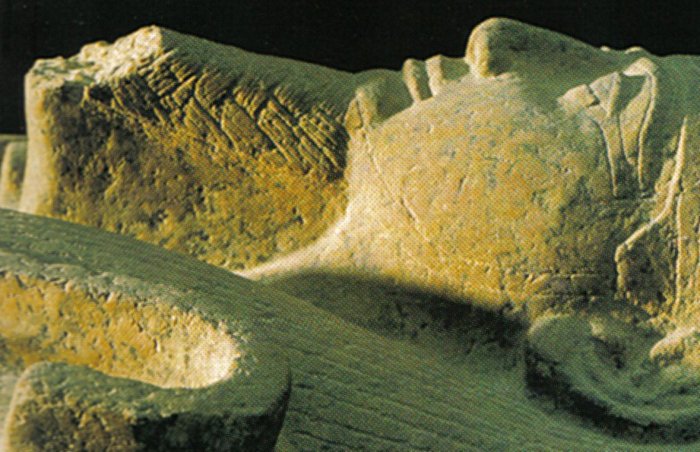MessageToEagle.com – Tanis, an ancient area in the Nile Delta, Egypt, was early subject of the archaeologists’ interest. The city’s name was already well known as Soan (biblical Zoan).
Among many tombs of Tanis, there was one that belonged to Psusennes I, the third pharaoh of the 21st Dynasty who ruled from Tanis between 1047 – 1001 BC.

His name Psusennes (in Greek, Pasibkhanu ) or Egyptian Hor-Pasebakhaenniut means “The Star Appearing in the City” and his throne name was translated to ”Great are the Manifestations of Ra, chosen of Amun.” Psusennes I was the third king of the Twenty-first Dynasty and is probably the best known of all this dynasty’s kings.
In February 1939, the French archaeologist Pierre Montet (1885 – 1966) and his workers discovered an underground chamber blocked by a stone.
It was a tomb consisting of four decorated limestone chambers containing sarcophagi belonging Osorkon III and Prince Hornakht and the remnants of Takelot II’s and Osorkon I’s tombs.
In 1940, Montet and his workers continued the excavations at the ancient capital of Tanis and discovered one complete, undisturbed tomb.
The tomb belonged to the 21st Dynasty king Psusennes I, as well as the tombs of the Pharaohs Osorkon I, Takelot II, Sheshonq III and others in a royal necropolis at Tanis.
See also:
Tomb Of Pharaoh Seti I Is The Largest Tomb In The Valley Of The Kings
10 Fascinating Facts About Pharaohs
Colossi Of Memnon: Gigantic Stone Statues Guarding The Temple Of Pharaoh Amenhotep III
The chamber was opened by moving the door block of granite.
In a narrow room, there was enough space for a decorated coffin made of rose granite.
At the feet of the sarcophagus stood a canopic jar, which contained the king’s internal organs and vessels in gold and silver. The king’s body was covered with amulets, precious and semi-precious stones.
Psusennes’ mummy – destroyed due to the Lower Egypt’s moist location – was placed inside a coffin of silver, which was more valuable than gold as it had to be imported to Egypt.
This coffin was then placed in a black granite sarcophagus, which was in turn placed in a red granite outer sarcophagus.
Especially notable amongst the items discovered in the tomb was Psusennes’ solid gold mask, which was found completely intact.
The mask – considered one of the treasure masterpieces – was made of gold and lapis lazuli and held inlays of black and white glass for the eyes and eyebrows of the object. It has a maximum width and height of 38 cm and 48 cm respectively.
Archaeologists discovered that the pharaoh’s “fingers and toes had been encased in gold stalls, and he was buried with gold sandals on his feet. The finger stalls are the most elaborate ever found, with sculpted fingernails. Each finger wore an elaborate ring of gold and lapis lazuli or some other semiprecious stone.
The intact tomb of pharaoh Psusennes I can only be compared to Tutankhamun’s and it testifies that Psusennes I had a rich funeral.
MessageToEagle.com
Expand for references






